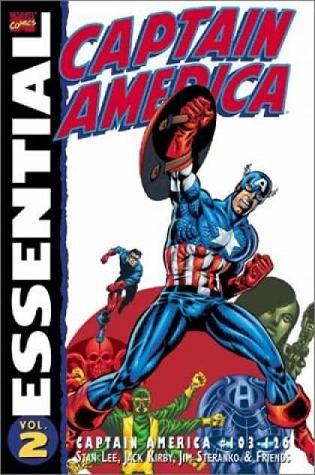
Essential Fantastic Four Vol. 3
Stan Lee, Jack Kirby and friends
Reprints: Fantastic Four #41-63 and Annual 3-4 (August 1965 – June 1967)
Get this for: Lee and Kirby at the peak of their game — Five stars
Essential Fantastic Four Vol. 2 ended with the Battle of the Baxter Building, in which a powerless Fantastic Four, with the aid of a blind man, Daredevil, had to defeat their most dangerous enemy Doctor Doom. That was a great story to end the volume with and hard to top, yet Essential Fantastic Four Vol. 3 almost as strong with the return of the Frightful Four who kidnap and brainwash the Thing to use against his partners. That story leads into the wedding of Reed and Sue, followed by the coming of the Inhumans, spanning no less than five issues. But that’s just the start, as the FF have to immediately face the threat of Galactus and the Silver Surfer. Perhaps the best story Lee and Kirby ever did together, but the very next issue has another strong candidate for that title: “This Man… This Monster” in which an unnamed embittered scientist takes over the Things powers and learns just in time the true meaning of heroism — Stan Lee’s sentimental instincts honed to perfection. All this only takes us up to #51, with the rest of the volume also seeing the introduction of the Black Panther, the continuing struggle of Johnny Storm to rescue the Inhumans from their prison, the menace of Klaw, Doctor Doom stealing the Silver Surfer’s cosmic powers and more.
As I’ve said before, The Fantastic Four started out as relatively realistic series, in as far as a series starring an orange rock monster, a rubber man, invisible woman and a human torch can be realistic and then slowly started to abandon that realism for more grandiose, imaginative visions. You could already see this happening in the first two volumes, but here Lee’s and especially Kirby’s imagination has been completely unshackled. Great big chunks of the Marvel Universe are seen for the first time here: Galactus and the Surfer, the Inhumans, the Black Panther and his home country of Wakanda, Klaw, Blastaar, the Negative Zone and so on. All these would be further developed later on, both by Lee and Kirby themselves as by other writers and artists but the core concepts were created here.
With this enormous burst of creativity came an expansion in story length. Had earlier FF stories been either single issue or rarely double issue in length, here not only do stories run for three, four or even five issues, they flow into each other, with subplots being carried over and developing for the best part of a year or longer. It’s still possible to pick up a given issue and know what’s going, if only because of the inevitable recaps Lee gives at the start of each issue, but it definitively helps to have been reading the series for longer. Again it’s Lee and Kirby pioneering a style of storytelling that would become ubiquitous at Marvel in the decades since.
Also evolving because of the greater length, complexity and grandeur of the stories, is Kirby’s art. He started out subdued and realistic back in volume one, was already starting to experiment in the next volume but here he has unshackled his imagination. His old strengths are still there, but they’re now coupled to a sense of design that few since have equalled. His characters are fluid and constantly in motion, he’s still the master of fight scenes, equally adept at illustrating the more quiet scenes, but he really comes to live when he gets to create a new civilisation. Both the Black Panther’s Wakanda and the Inhumans great refuge are places of super science, but you could never mistake the one for the other.
In short, this is Lee and Kirby at their very best and if you can get only one Essential Fantastic Four volume, get this one.



